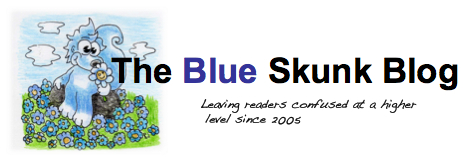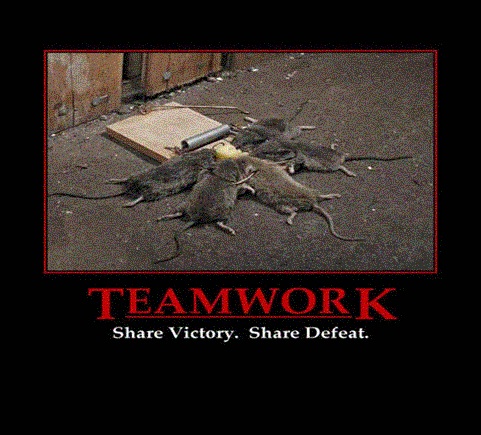Library as warehouse RIP
 Friday, October 23, 2009 at 05:41PM
Friday, October 23, 2009 at 05:41PM
In a blog post, The Day It All Changed, Fran Toolan describes a demonstration given by Brewster Kale "Internet Archive Founder and Chief Librarian" of the BookServer Project. Toolan writes:
BookServer is a framework of tools and activities. It is an open-architectured set of tools that allow for the discoverability, distribution, and delivery of electronic books by retailers, librarians, and aggregators, all in a way that makes for a very easy and satisfying experience for the reader, on whatever device they want...
- Brewster announced that the number of books scanned at libraries all over the world has increased over the past year from 1 million books to 1.6 million books.
- He then announced that all of these 1.6 million books were available in the ePub format, making them accessible via Stanza on the iPhone, on Sony Readers, and many other reading devices in a way that allows the text to re-flow if the font has been changed.
- Next he announced that not only were these files available in ePub form, but that they were available in the “Daisy” format as well. Daisy is the format used to create Braille and Text to Speech software interpretations of the work.
- There were other statistics he cited related to other mediums such as 100,000 hours of TV recordings, 400,000 music recordings, and 15 billion (yes it’s a ‘b’) web pages that have been archived.
- He then choreographed a series of demonstrations. Raj Kumar from Internet Archive demonstrated how the BookServer technology can deliver books to the OLPC (One Laptop per Child) XO laptop, wirelessly. There are 1 million of these machines in the hands of underprivileged children around the world, and today they just got access to 1.6 million new books.
- Michael Ang of IA then demonstrated how a title in the Internet Archive which was available in the MOBI format could be downloaded to a Kindle – from outside the Kindle store – and then read on the Kindle. Because many of these titles were in the Mobi format as well, Kindle readers everywhere also have access to IA’s vast database.
- Next up, Mike McCabe of IA, came up and demonstrated how files in the Daisy format could be downloaded to a PC then downloaded to a device from Humana, specifically designed for the reading impaired. The device used Text-to-speech technology to deliver the content, but what was most amazing about this device was the unprecedented ease at which a sight impaired person could navigate around a book, moving from chapter to chapter, or to specific pages in the text.
- Brewster took a break from the demonstrations to elaborate a couple of facts, the most significant of which was the fact the books in the worlds libraries fall into 3 categories. The first category is public domain, which accounts for 20% of the total titles out there – these are the titles being scanned by IA. The second category is books that are in print and still commercially viable, these account for 10% of the volumes in the world’s libraries. The last category are books that are “out of print” but still in copyright. These account for 70% of the titles, and Brewster called this massive amount of information the “dead zone” of publishing. Many of these are the orphan titles that we’ve heard so much about related to the Google Book Settlement – where no one even knows how to contact the copyright holder. (To all of my friends in publishing, if you let these statistics sink in for a minute, your head will start to spin).
- Brewster went on to talk about how for any digital ecosystem to thrive, it must support not just the free availability of information, but also the ability for a consumer to purchase, or borrow books as well...
- The last demonstration was not a new one to me, but Raj came back on and he and Brewster demonstrated how using the Adobe ACS4 server technology, digital books can be borrowed, and protected from being over borrowed from libraries everywhere. First Brewster demonstrated the borrowing process, and then Raj tried to borrow the same book but found he couldn’t because it was already checked out. In a tip of the hat to Sony, Brewster then downloaded his borrowed text to his Sony Reader. This model protects the practice of libraries buying copies of books from publishers, and only loaning out what they have to loan. (Contrary to many publishers fears that it’s too easy to “loan” unlimited copies of e-Books from libraries).
It's not a matter of if, but when, all our libraries become radically different places because of this project, Google Scan the Book, and others that will follow. David Loertscher has been a critic of libraries as warehouses as long as I can remember. Does this nail the lid on the coffin of this concept? Are we prepared as a profession to help students find and download relevant materials on a variety of reading devices (I know I'm NOT.)
Projects like Kales are tough on librarians, but good for humanity.
Oh, from his BookServer website:
Who Benefits?
Authors find wider distribution for their work.
Publishers both big and small can distribute books directly to readers.
Book sellers find new and larger audiences for their products.
Device makers can offer access to millions of books instantly.
Libraries can continue to loan books in the way that patrons expect.
Readers get universal access to all knowledge.










